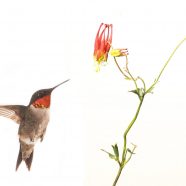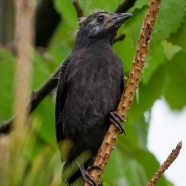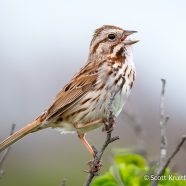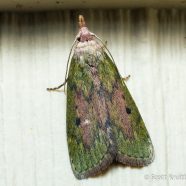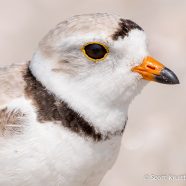Ruby-throated Hummingbird (Archilochus colubris) & Red Columbine (Aquilegia canadensis)
Here’s a Ruby-throated Hummingbird (Archilochus colubris) feeding on some Red Columbine (Aquilegia canadensis) by RTPI Affiliate Sean Graesser. Photographed for the Meet Your Neighbours global biodiversity project in Connecticut while on assignment for The Roger Tory Peterson Institute of Natural History.
Read MoreRTPI Nature Store Selection
We hope you will stop by RTPI’s Nature Store soon! RTPI’s gallery is and will remain closed to the public during exhibit installation. However, the Nature Store and grounds will remain open and the Keeping the World Wild exhibition opens Friday, June 17th. There is no better place to buy a Peterson Field Guide…
Read MoreCommon Grackle Fledgling
This little dinosaur – er, uh…bird – is a Common Grackle (Quiscalus quiscula) fledgling looking for another bite on a recent morning. The hatchlings and fledglings of so many species end up looking like tiny dinosaurs to me in some ways. For some reason the little Willets (Tringa semipalmata), a large shorebird species, always struck me as a dinosaur with a long neck, long legs and barely any wings. Without their flight ability and all of those feathers many species of young birds seem to be a glimpse of the past. Scott Kruitbosch Conservation & Outreach...
Read MoreSinging Song
This can be the quietest time of the season for some Song Sparrows (Melospiza melodia) as they keep their incessant and resonant voices down after having established territory, found a mate, and successfully built a nest. You do not want to advertise quite as much when there are eggs and young to protect, but sometimes you do have to keep an eye on your property and belt out a tune or two.
Read MoreThe Bee Moth
This pretty moth gave me a tough time trying to pin down an identification, but it looks to be a female Aphomia sociella – The Bee Moth. I was less enthusiastic in learning that Aphomia sociella is a non-native and often pest moth that was likely introduced from Europe via the colonists and bee hives. They often end up destroying those hives from the inside out. Everything has its place, I suppose… Scott Kruitbosch Conservation & Outreach Coordinator
Read MorePiping Plover Portrait
The Piping Plover (Charadrius melodus) shown here became a father a couple of weeks ago, and this photo is a very cropped version of a shot that I took with my 500mm lens while monitoring this new family. Mom and the three hatchlings were further down the beach while he came out to greet me…and to make sure I kept it moving as I walked along the waterline. It has been a challenging year for the Audubon Alliance for Coastal Waterbirds, and we are still in the middle of our busiest and most difficult part of the season. See how you can help out in Connecticut by emailing...
Read More



